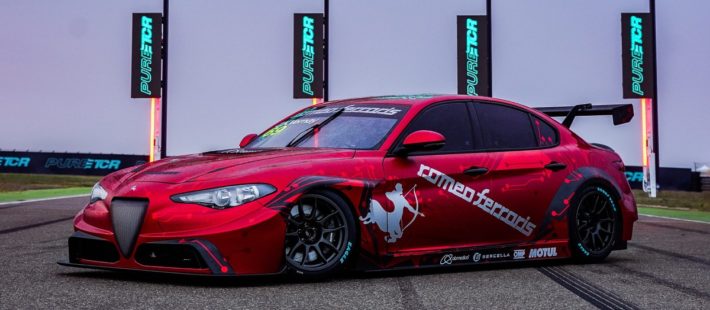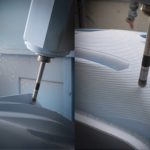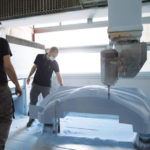Performance, aesthetics and aerodynamics
The first Alfa Romeo Giulia ETCR by Romeo Ferraris made its debut at the MotorLand Aragón in Alcañiz (Spain), during which the first promotional event took place on the PURE ETCR track. It was equipped with a bodywork signed Bercella made of carbon fiber. The model is run to the first world championship of tourism dedicated to electric cars, the Pure ETCR (Electric Touring Car Racing) scheduled for 2021.
Collaboration between Romeo Ferraris and Bercella
Given the previous successful experiences on special projects in the Motorsport sector, Romeo has chosen Bercella again.
Romeo Ferraris, a Milan-based manufacturer historically linked to the Alfa Romeo brand, chose Bercella for the design and production of the carbon fiber bodywork of the Alfa Romeo Giulia ETCR. The new electric car that brings the Giulia name back to racing after over fifty years.
In addition to the bodywork, the advanced composite materials company has also realized the complementary structures of the electric powertrain for the all-electric Alfa Romeo Giulia ETCR car.
Here what Bercella’s CEO Massimo Bercella said
“Romeo Ferraris has renewed its trust in Bercella, relying on the capacity of our teams to:
- provide high-level performance
- process high-quality materials
- and to accept the challenge of an even more important and more complex project, given its unprecedented nature”
This time the partnership allows completely transform a road car into an electric propulsion prototype with 500kW of power. This was possible through the use of high-quality composite materials, making it ready to compete in a very short time.
Two novelties mark the project
- The Pure ETCR category that is the new category for electric touring cars. It wants to become the reference category for the research and development of electric technologies on road cars, turn towards both motorsport enthusiasts and the electric mobility market
- It is the first time that an Alfa Romeo Giulia wears the racing suit, moreover in a special all-electric version.
“The electric Giulia represents a huge step forward compared to the latest racing cars we built, in terms of the staff involved in the project, their skills and the technologies used” says Michela Cerruti, manager of Operations of Romeo Ferraris. “An all-electric project required bringing in added value all along the construction chain. Therefore, we needed suppliers who could give us maximum support. Bercella was able to respond, with a beautiful, aesthetic result involving the aerodynamic precision associated with the company’s work.”
Starting from the 3D models of the Giulia’s chassis and aerodynamic surfaces, Bercella has defined all the components in detail, combining aerodynamic needs with structural performance related to safety (for example: through the Kevlar anti-intrusion bars inside the bumpers).
The next step
The project involving Bercella and Romeo Ferraris will engage them in the development of the support structures for the electric Powertrain. This will be necessary to give a performance boost to the Giulia and put it in an advantageous position for the championship scheduled for 2021.
If you want to stay updated on news, technologies and activities, subscribe to Compositi Newsletter
Source: CompositesWorld














